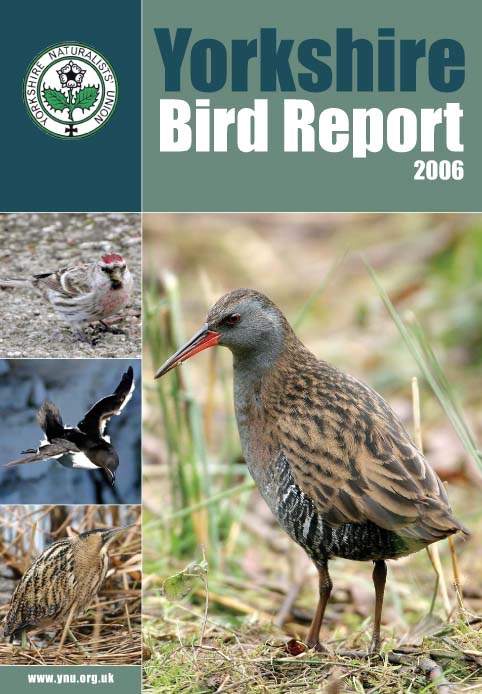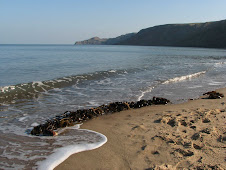Sunday, March 23, 2008
Siskins

The Siskins have returned to the garden feeders with gusto in the last 10 days or so. Now the Niger seed is getting scoffed at high rate, helped by up to 15 Goldfinch. What is interesting is that all through the winter I can't recall seeing a Siskin eat peanuts but since they've returned they're also to be found on the peanut feeders. Also of note today a displaying Kestrel, Marsh Tit and Tree Sparrow, 2.
Posted by
Alastair
at
9:29 pm
0
comments
![]()
Saturday, March 22, 2008
Lap Bunts again
I had a quick look for the Laps this afternoon. Easily found the spot, good directions Craig, but no buntings. Very spectacular high tide at Sandsend though.
Posted by
Alastair
at
8:23 pm
0
comments
![]()
Friday, March 21, 2008
Med Gull bonanza
At dusk 15 Whoopers flew gracefully in.
Totals were Med G, 4; LB-bG, 1; GB-bG, 17; HG, c85; CG, c 1,700+; Bl,hG, c2,000.
Also present Mallard, 2; Tufted, 19, Goldeneye, 2; Teal, 1; Oystercatcher, 1; Curlew, 1; Redshank, 1; Lapwing, 6. An elusive pipit refused to give itself up and in the howling gale I just could not hear it well enough to be sure.
Hide - taking off. If it's still there tomorrow I'll be surprised; pleased but surprised.
Posted by
Alastair
at
8:34 pm
0
comments
![]()
Lapland Buntings
The Lapland Buntings at Sandsend may still be viewable. To find them. Go to the car park at the west end (through the arches by the cafe). From the car park walk up steps onto old railway, a couple of yards past marker number 2 there is a path that leads through the wood up more steep steps, once at the top go over the stile and turn right, go over the next stile, this is where the Lap Bunts have been for over a week now. The field is a grass field with a ploughed section at the top, Pheasent pens and crop/set aside on the right with some oil seed rape mixed in. I heard some people were walking along the railway too far, so thought I would clarify the directions for you.
Thanks to Craig S for that info.
Posted by
Alastair
at
3:20 pm
0
comments
![]()
Wednesday, March 19, 2008
More car birds
Late, late, late, late - toe down job. Aaaaaaaarrrggggggggghhhhhhhhhhh A171 horse box and queue - chill. Phone's going, **** **** **** Then across the road in the dusk, a huge swift, no, as it broke into flaps, a Merlin going to roost in the pines.
Posted by
Alastair
at
8:42 pm
0
comments
![]()
Yorkshire Bird Report 2005

The Yorkshire Bird Report 2005 is now available. The report is very detailed and provides an overview of many species' status in the county, well worth £10 and £2 p&p. Cheques should be made payable to YNU - ah better check who to write to hadn't I?
Posted by
Alastair
at
8:21 pm
1 comments
![]()
Saturday, March 15, 2008
Let's start a fight .....
So down at the redoubtable Scaling Dam this very morn and what's this in the log? One nationally known birder - it's tempting to name and shame - has written that they think it's "selfish" to take away the log pages every few weeks and what is more he won't write in the log because of that and having a log book would be far more sensible. Er, what's all this about?
1. The note implies he doesn't know who takes the log pages away when it's someone I'm sure he knows and I presume could have easily phoned up (it's not me by the way).
2. So why not write in the log? Surely the act of not writing his observations in are also a "selfish" act?
3. Hasn't he heard of BirdGuides and pagers which I know the keeper of the log uses to put out any news of interest from the lovely Scaling Dam.
4. Log books get taken and lots of places have had to resort to pages that are removed every few weeks because otherwise the poor recorder has to copy the info from the log book at each visit to preserve the records.
5. The recorder for the transformed Scaling Dam works the place weekly, he finds the most good birds there, he puts scarce bird news out on the pager etc system, he writes the annual report and he supplies his records reliably to both TBC and YNU. What's to knock? Nought IMHO.
Transformed, yes, Scaling Dam has had its earth moved, someone has assaulted its delicate tideline with a significant piece of machinery. Looks like a good job to me. There was even a Dunlin there today to celebrate the new wader-friendly Scaling Dam. Also House Sparrows galore, a veritable scarcity; Redshank, more gulls than I've seen for a while 6 Goldeneye and shockingly 6 real birders in the time I was there (I include myself, perhaps erroneously, in that good total). What no pictures! Sadly I was so distracted by the birding chat and thrown by the disconcerting attack on the recorder I clean forgot.
Best bird of the day was a complete fluke. Having delivered offspring to a party I cut across the moor. Something caught my eye alongside the vehicle and behold twas a male Gos flying alongside me not 20 feet away, keeping pace at car window height. I guess the moment didn't last more than a few seconds but it was a wonderful view of a magnificent beast.
Posted by
Alastair
at
7:39 pm
2
comments
![]()
Sunday, March 09, 2008
Weekend birding

Saw some nice things in the vice county this weekend. Runswick Bay produced an inshore Red-throated Diver on Saturday plus the usual Oystercatchers and Turnstones. Also this rather smart "Fisherman's Robin" outside the pub.
Sunday's birds included Common Buzzard, a couple of flocks of Redwings, a pair of Stonechats, the first Curlew of the spring on the moors, Lapwings on territory on the moors, Siskins on territory methinks in a conifer plantation and various other bits and bats.
2nd best moment was seeing a 4WD vehicle go off road and rapidly get very stuck. As it was the lead vehicle of 3 and a motorbike they all had to get out just as a particularly vicious hail storm passed through. Sadly they managed to get the vehicle out of the huge rut that has of course been created by 4WD vehicles. These were recreational 4WD excursionists, I have no problem with working vehicles on the moor, but these folk, hope they smash their sumps and their vehicles are scrappy bound tomorrow, all of them, and the off-road motorbikes as well.
Posted by
Alastair
at
7:08 pm
0
comments
![]()
Thursday, March 06, 2008
Hen Harrier hotline
The RSPB has set up a Hen Harrier hotline. 0845 4600121. If you see a Hen Harrier this spring in suitable nesting habitat make sure you know the location , OS map reference and telephone. There is an email address also: henharriers@rspb.org.uk
More information is here.
The Hen Harrier will only survive as a breeding bird on our moors if we coordinate a response to the illegal persecution of this species that is the reason for its virtual elimination as a breeding and wintering bird from our uplands.
Posted by
Alastair
at
7:23 pm
3
comments
![]()
Wednesday, March 05, 2008
Still writing skuas
A record of a North Sea Arctic Skua in January is a very rare thing. A quick search of Birdguides indicates just two north of the Wash since 2001. There are no records for February in the same period. With the potential for confusion with Pom high (although north of the Wash that species is also very, very scarce) a great deal of caution should be exercised methinks. However, perhaps folk just don't report these species? Anyone seen a Stercorarius skua in the North Sea, north of the Wash in January or February? I'm interested to know just how uncommon these are - I don't have many old bird reports so if anyone has the time or inclination to search through and let me know, Yorkshire, Cleveland, Durham, Northumberland and any Scottish information would be very gratefully received. TIA
Posted by
Alastair
at
8:46 pm
2
comments
![]()
Sunday, March 02, 2008
Age of the bird moan
Stock Doves all lovey-dovey (ho-ho-ho) all around the fields nearby - and singing; Song Thrush singing, Tree Sparrows again. Marsh Tit and Siskin now notable by their absence.
The sea at Runswick Bay was rather uneven, sand storms blew occasionally across the beach to the accompaniment of some wailing and complaining by offspring, Ringed Plovers were the only notable birds.
Posted by
Alastair
at
8:43 pm
6
comments
![]()
Saturday, March 01, 2008
Invert invasion
I was given some new trousers last weekend. Having bemoaned the sorry state of my combats and the extortionate prices on the army surplus sites Karl took pity on me and presented me with a pair of urban "camouflage" strides. They're the kind with great white splodges on them that can be seen from space, unmistakable if pictured by Google Earth. However, I'm not that fussy and a few visits to the coal shed and a bit of stumbling around on the moor would, I imagined soon get them to more grimy tones. I'm not superstitious but I do only wear "lucky" kit for birding so something new is a bit suspect. If on the first outing I see bog all and the second outing is little better clothing is remaindered to the house cleaning, gardening draw. But these will be my constant companions now as my drive off and away to a Gos site was well rewarded. Might have to try them on a twitch up to Teesmouth at this rate.
First thing the garden was host to Tree Sparrows x2 and a field away from the house a Grey Partridge.
Posted by
Alastair
at
8:46 pm
0
comments
![]()


















